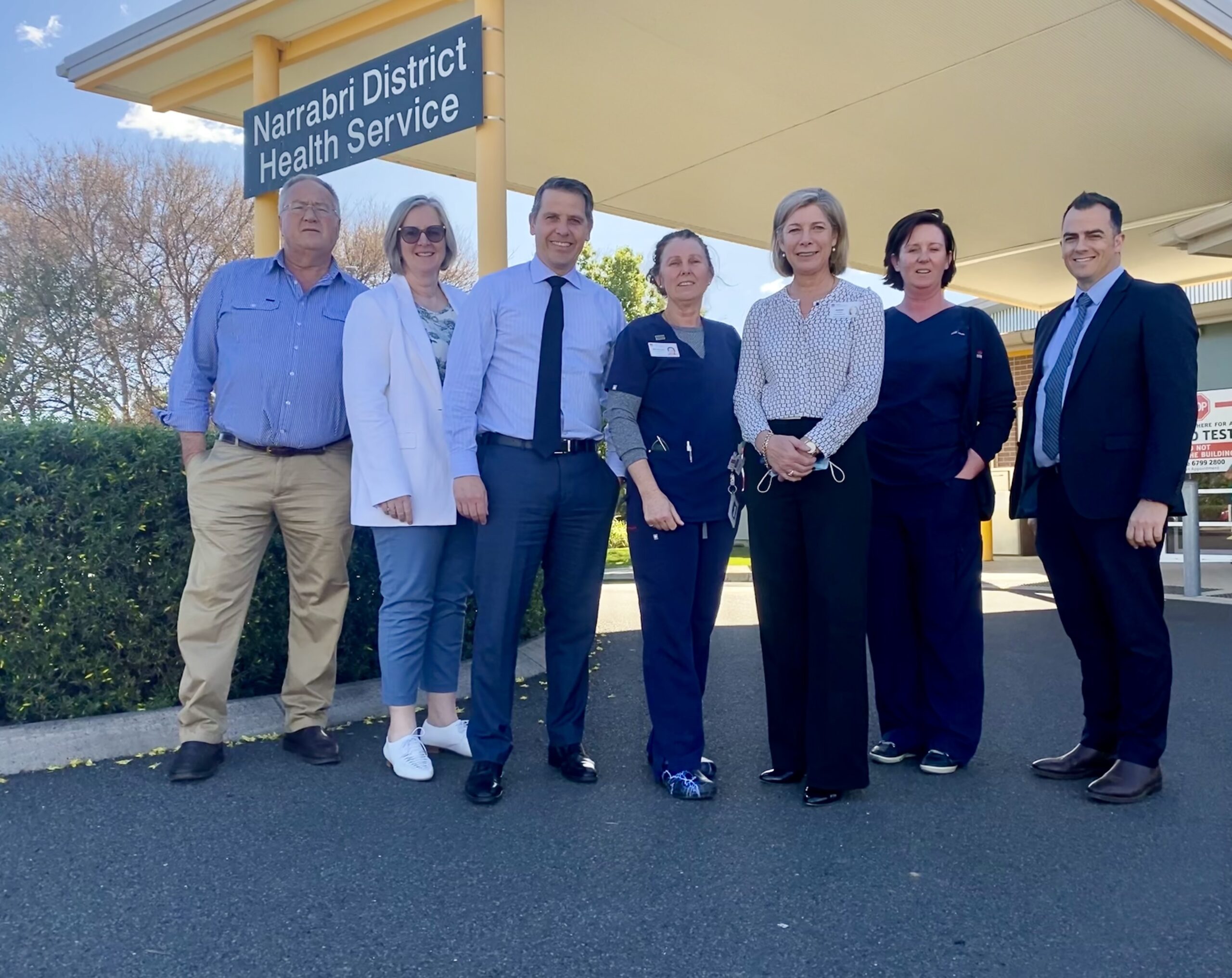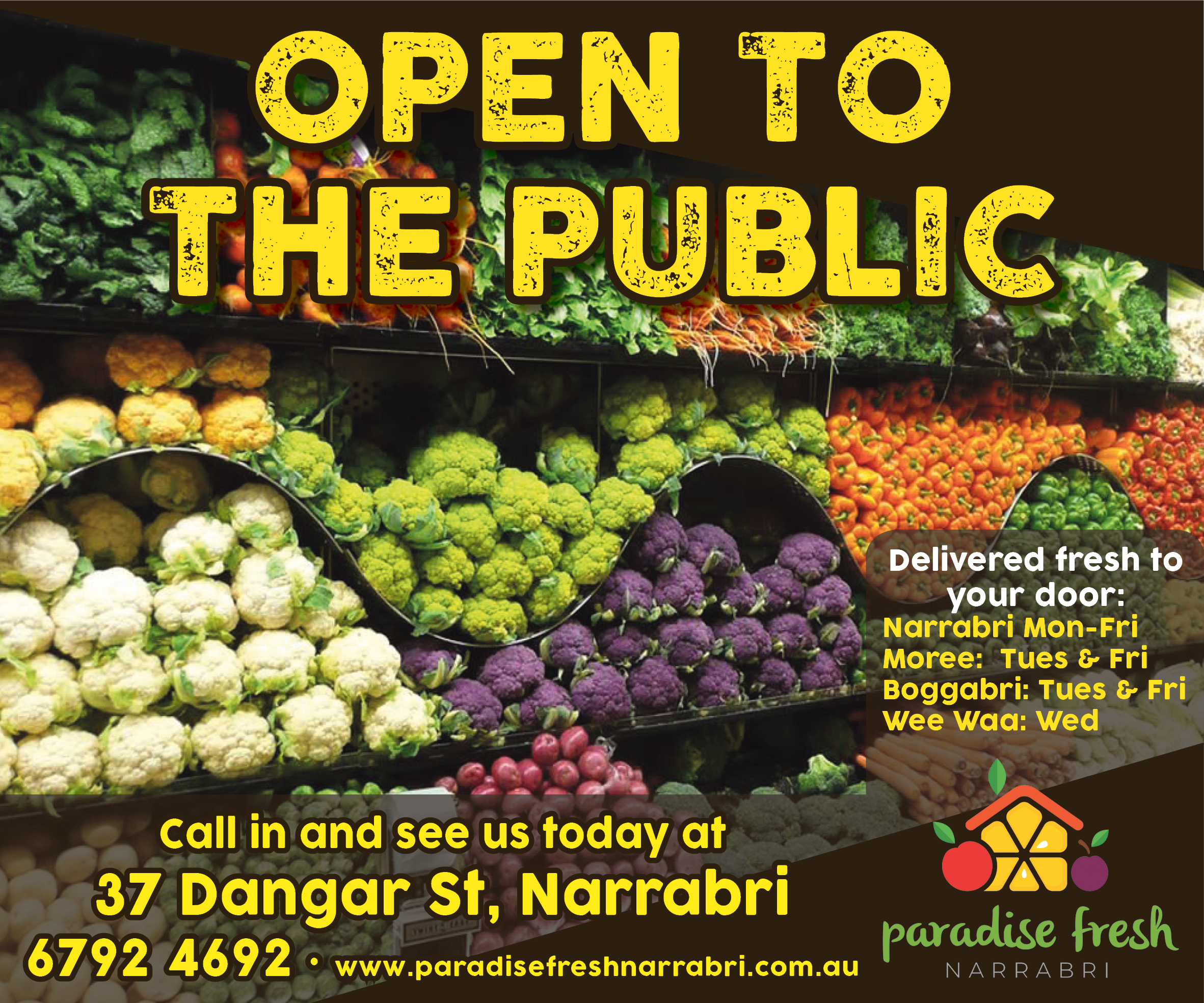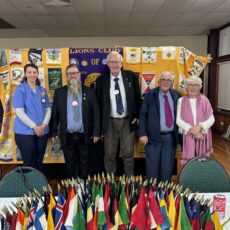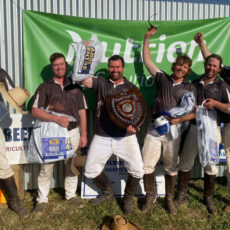NSW Health Minister Ryan Park said it was “fantastic” to meet with clinicians, nurses, health professionals, hospital staff and community members when he visited Narrabri and Wee Waa on Tuesday.
Mr Park’s trip included a tour of Narrabri Hospital, led by acting health service manager Michelle Wilkinson and acting clinical nurse manager Shay Renaud.
The next stop was Wee Waa, where new health services manager Yve Connett showed Mr Park around the hospital before a closed meeting was held with the Wee Waa Hospital Working Group.
Mr Park made it clear one of his top priorities is finding ways to boost the rural health workforce.
“I think for too long we’ve been a bit obsessed with opening new buildings, what we haven’t been obsessed with enough is properly staffing and resourcing them,” Mr Park told The Courier.
“Now that’s a challenge – it’s a challenge globally, it’s a challenge nationally, it’s a challenge within our state, and particularly in rural and regional areas.”
“But we’re throwing everything at it, and we’ll continue to throw everything at it and prioritise it,” Mr Park said.
“Because people in rural and regional NSW deserve to have access to a level of health care that many of us in metropolitan areas take for granted.”
A mix of community members make up the Wee Waa Hospital Working Group, from the aged care sector to ambulance and Wee Waa Local Aboriginal Land Council representatives.
It was formed at Mr Park’s request after Hunter New England Local Health District announced the temporary reduction of services in Wee Waa earlier this year because of “significant challenges securing healthcare staff in rural and regional areas”.
“Wee Waa Health Service is experiencing these challenges, where despite extensive recruitment efforts the service has a number of nursing vacancies it has been unable to fill,” said the HNELHD statement.
“To ensure ongoing safe patient care, we have made the difficult decision to temporarily reduce some services at Wee Waa Health Service from Monday, May 8, 2023.”
Mr Park’s office released a statement in May “assuring communities in the regional NSW towns of Nyngan and Wee Waa that their local health facilities will remain open”.
Member for Barwon Roy Butler encouraged the establishment of the working party and representatives from his office were at Tuesday’s meeting, including John Clements who is a group member and chamber of commerce president.
When asked about the group’s mission statement, Mr Clements said “never give up”.
“This town is determined; we’re not going to lose this facility and we’re not going to have a pretend facility.
“It’s got to be a proper facility.
“It was a polite, well-structured meeting, but people were quite direct about the things they’re concerned about, which is good.”
Local and NSW Health representatives also joined Mr Park on his tour, including Hunter New England Health executive director of rural and regional health services Susan Heyman and Deputy Secretary for Regional Health Luke Sloane.
In both Narrabri and Wee Waa, hospital staff recruitment and retention were hot topics of conversation.
Mr Park said meeting face-to-face with health workers and hearing directly from nurses in facilities such as the Narrabri Hospital and Wee Waa Health Service is “critical” to him.
“People ask me what keeps me up at night as the Health Minister of NSW, and what keeps me up at night is staffing and resourcing our hospitals across the state,” said Mr Park.
“That’s where my focus is, that’s where I want to put my energy and my effort. I’ve made it clear to NSW Health it’s where I want them to put their energy and effort.”
Mr Park said it was essential staff felt supported, valued, and were offered professional development opportunities.
Different ways to attract healthcare workers and welcome them to rural areas were discussed amongst the group as they walked the hospital corridors.
One idea raised was the Community Connector Program in Shepparton, which is being run in collaboration with local council, and was developed to assist new residents with a relocation concierge service that provides help and local knowledge in a range of areas from finding a new home to childcare, and information on local sporting teams to join.
On August 11, the NSW government announced it would double the incentives offered to healthcare workers to relocate to remote and rural areas, from $10,000 to $20,000 as part of its commitment to attract and retain more skilled staff in hard to fill and critical roles in regional and rural areas.
The Courier asked Mr Park what his message was to people who felt like the hospital in Wee Waa might be shutting down.
“No, look, we’re not at that stage, we’re not at that stage” he said.
“What we’re at the stage of is trying to make sure, that we can recruit and try and make sure that we develop a service at Wee Waa that is sustainable, has enough volume going through it, services the community and provides high quality and safe health care.
“Now we need to get that balance right.
“We need to make sure that we can try and get a doctor and then have a look at the service in totality to see how we might change it to respond to the community’s needs and to respond to the actual health needs of the Wee Waa community.
“And that’s something that we’ll continue to engage with the working group on. And that’s the reason why we wanted to set it up. I’m really happy that NSW Health has done that.”
Of course, the dream scenario to help the hospital’s future would be successfully recruiting a permanent Visiting Medical Officer.
Currently, Wee Waa Health Service relies on locum doctors (with one understood to visit most weekends) or doctors based in remote locations via phone and video-based service services such as My Emergency Doctor.
“Look, the challenge firstly is if we can recruit a doctor,” said Mr Park.
“Now there are a number of GPs …what we’ve got to do is see if one of those GPs would be willing to go and work in that service.
“Obviously we have to do that in a way that’s sensible and sustainable, both financially and from a work perspective for them to make sure that there’s enough work moving through that hospital.
“But what we need to really do is continue work and engagement with the local community through that working group.
“The reason why I was keen to set up that working group was so that the community felt they had a bit of ownership understanding and a basis for why decisions were made.
“And we want to keep that working group established so that we try and work through various solutions.
“There might be some rocky roads ahead, but we can work through that as a group rather than making decisions a million miles away that the group and the community may not understand or accept.
“We will work through it together with the community.
“It’s a challenge, we know it’s a challenge, but we also have to make sure that we’re delivering healthcare that’s sustainable, safe and effective.”
Mr Clements said a concern raised in the Working Group’s meeting is how a reduction in services can automatically lead to a reduction in the number of people utilising the Wee Waa Health Service, therefore on paper it might look like there is less of a demand.
“It’s the same as the banks, banks reduce services by two days and then suddenly it’s staggering no one was using it, well no one could use it.
“It was addressed very strongly today, the fact that we’re just not going to take ‘there’s very few visits here’, if you run a service that’s driven that.”
Mr Clements said the Working Group’s main priority is finding a Visiting Medical Officer (a medical practitioner in private practice who also provides medical services in a public hospital) for the Wee Waa Heath Service.
He said the reliance on consultations with doctors based at a remote location via technology programs means “nurses feel like that puts a lot of the load on them”.
“They feel like they’re making decisions and taking responsibilities they shouldn’t have to.
“The working party has been insistent on saying ‘don’t tell us you have other solutions because there aren’t other solutions that will be workable for the nurses.
“And frankly for the community, with the video doctor the non-verbal cues, a lot of people live off non-verbal cues and they’re just not at ease with a doctor on a little screen.
“The other thing is if a hospital’s services are cranked back enough then there’s not enough career opportunities for young nurses.
“The ambulance workload has astronomically increased, picking up at the aged care and taking a person into Narrabri who might have had a small fall used to be a quick job, now it’s a two-hour job, and if the patient has cognitive impairment, it’s a frightening thing for them too.”
“So, we’re really keen to see the (Wee Waa) hospital viable and increase the services it offers.
“We want a proper operating hospital, not a hospital with stripped out services waiting to fail.”
Mr Clements said it was great Mr Park could visit the towns for meetings and working party members had the chance to express the pressures and concerns being experienced.
“It’s always good to get face-to-face with a person: they see humanity, they hear people talk, that’s more powerful a briefing note.”
Mr Butler sent his apologies that he couldn’t attend the tour because of a prior engagement on the other side of the electorate and said, “It is good to see the minister getting out to Barwon to meet with community members.
“He has visited previously and no doubt there will be future visits.
“I look forward to catching up with the minister to talk about issues that were discussed with the working group, to see what we can work together on in relation to Wee Waa Health service.”
This week during the tour, Mr Park also opened new accommodation for visiting health workers in Tamworth and announced the expansion of the Single Employer Model program, with Tamworth and Armidale hospitals identified as initial trial sites.
The program aims to provide a coordinated pathway that makes it easier and more attractive for junior doctors to train as rural generalists, who can deliver care in both emergency departments and general practices.
To order photos from this page click here










